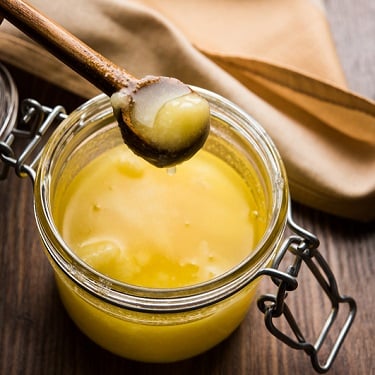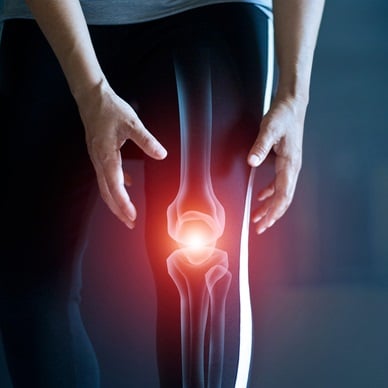What is Earwax? And Why Do We Have It?

Perhaps you felt a little pressure, an itch, or just didn’t hear something so well. Your finger finds its way to your ear, and you encounter a sticky, flaky, or pasty blob of yellowish or brownish gunk. Yep, we’re talking about earwax. Eww… are we really going to go into ear boogers? Yes, yes we are. What is earwax? And is there any real purpose of earwax? Why do we have it? Come on… it’s okay to admit you’re curious too. 😉
What is Earwax?
The ear canal is a wonderful, unique part of the body that protects the delicate inner workings of the ear. It’s lined with skin cells and glands. Earwax, also called cerumen, is naturally created within the ear canal as a mix of dead hair and skin cells, fatty oils, and sweat. It can form into small, medium, and really big globs that can even affect hearing. 1
Earwax is individualized, and some folks have a dryer, flakier wax, while others have a pastier or stickier wax. Color can also vary from light yellow or golden/honey colored to a darker brown or orange-brown. And the color and texture of earwax is typically genetically determined. 2
Darker colored (for you) earwax is likely older and, because it’s had more air exposure, it’s more flaky or dusty. If earwax looks like it has green or whitish pus, it’s caked on your pillow when you wake up, your earwax looks bloody or black, or your ears are painful are all reasons to visit a healthcare professional to see if you’re fighting an infection.
What is the Purpose of Earwax?
While tools to remove earwax have been found from ancient civilizations as far back as the Romans and Vikings, don’t be so quick to wish the wax away. Earwax isn’t just something some little kids can use to gross out their siblings and friends. It actually serves several vital purposes.
For example, earwax helps keep the flesh around the ears lubricated and healthy, so they don’t feel dry or itchy. It helps the lining of the ear canal stay clean and protected, helping repel water, dirt, insects, fungi, and bacteria. As it has antibacterial and antifungal properties, it’s also believed to help prevent infections in the ear canal. 3 One reason is because when the ears feel dry and itchy, people tend to touch them more. And that can lead to more infections in the ear canal.
Still, too much earwax can also cause issues, especially if it becomes impacted, leading to discomfort and possibly interfering with your ability to hear. Earwax impaction is more common for folks who have narrow ear canals, those who wear hearing aids, people with skin conditions or who have a lot of hair in their ears, as well as those who use cotton swabs or other items to clear out their ears. 1 It’s also more likely as we get older.
Symptoms of built-up earwax or blockage include:
- Ears feeling full and/or itchy
- Ear pain
- Ear infection
- Difficulty hearing
- Ringing in the ears
- Ear discharge
- Odor coming from the ear
- Dizziness or vertigo 4
How to Get the Wax Out?
While it’s tempting to stick your finger, a cotton swab, a bobby pin, or even a napkin or washcloth corner into the ear to get rid of excess wax, you’re more likely to push that wax deeper into the ear canal, packing it in to make the problem even worse and potentially causing permanent damage.
So, what is the best solution? Simple: in most cases, let nature run its course. You see, the ear canal is designed to naturally push excess wax out of the ear as new skin forms. 5,6 (The human body is always under construction!) When you chew or speak, the movement of the jaw also helps the wax migrate out of the ear. In other words, for the most part, the ear is self-cleaning.
Once the earwax is on the surface of the ear, it can be more easily removed as you bathe. Simply use a washcloth to clean the outside of the ear, and avoid pushing the earwax back into the canal with a cotton swab, finger, pen, paperclip, or the like.
If your ears are already bothering you, you may want to start by cleaning the outside of the ear and then using a solution to help dissolve the wax (i.e., a cerumenolytic solution). Some over-the-counter options include mineral oil, almond oil, baby oil, glycerin, hydrogen peroxide or peroxide-based ear drops, distilled water, or saline solution. 4, 7
The easiest ways to apply these to the affected ear are to lie on your side and use an eyedropper to drip the solution into the ear or, alternatively, you can soak a cotton ball in the solution, and put it over the ear and relax and lie down for a few minutes as the solution drips into the ear. Do this twice a day for three to five days to soften the wax. According to doctors, within the next couple of weeks, typically, the wax buildup will fall out on its own as you bathe or sleep. 8
However, if you have any ear injury, avoid using these methods as they can increase the risk of infection or cause more pain.
What about the miraculous claims around ear candles? Do they really create a vacuum that sucks the earwax out? Nope, research has demonstrated that ear candles aren’t an effective way to clean out the gunk. Plus, they can cause injury, including burns, blockage, hearing loss (though it’s typically temporary), swelling of the ear, and even damage to the eardrum. 9 – 12
If the wax becomes too excessive or impacted (that is, built up in the canal), it can become very uncomfortable and even negatively affect hearing. 13 In that case, the best bet is to head to your doctor to have the excess wax carefully cleaned out. You won’t be alone. In the U.S., nearly 150,000 wax removals (e.g., irrigation or suction) are performed by healthcare professionals each week! 14
To prevent future earwax blockage, remember not to stick anything into your ears as you clean them.
What is Earwax? A Recap
Earwax really isn’t gross. It’s natural, and its purpose is to keep your ears healthy and clean. Ears are also self-cleaning and you typically only need to bathe as usual and then wipe off the outside of the ear. However, you can also use some eardrops from time to time to help soften earwax if it begins to build up.
If, on the other hand, the wax is impacted and causing discomfort, don’t be afraid or embarrassed to chat with your doctor about it—even if it’s mostly because you’ve been fussing with your ears.




 US Doctor: "Eating This Every Day Can Snap You Into Ketosis"
US Doctor: "Eating This Every Day Can Snap You Into Ketosis" 3 Key Nutrients to Help Lubricate Your "Tin Man" Joints
3 Key Nutrients to Help Lubricate Your "Tin Man" Joints AVOID Plant-Based Protein Powders (unless...)
AVOID Plant-Based Protein Powders (unless...)

